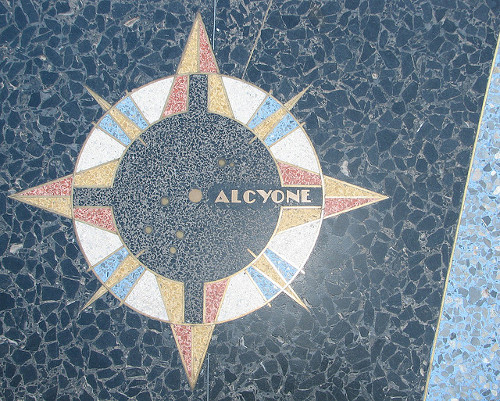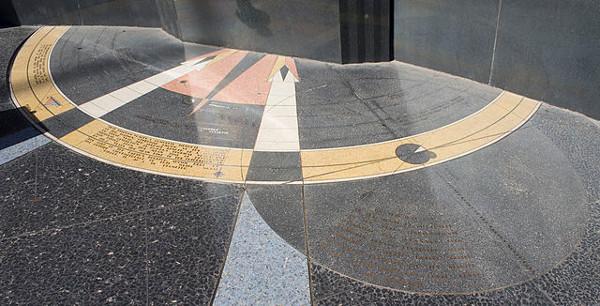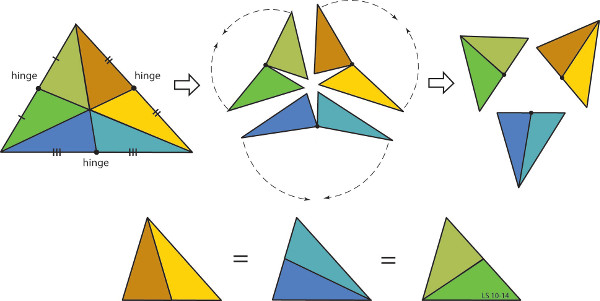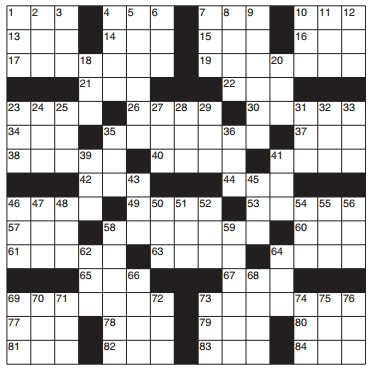
The Hoover Dam contains a star map depicting the sky of the Northern Hemisphere as it appeared at the moment that Franklin Roosevelt dedicated the dam. Artist Oskar Hansen imagined that the massive structure might outlive our civilization, and that the map could help future astronomers to calculate the date of its creation. The center star on the map, Alcyone, is the brightest star in the Pleiades, and our sun occupies a position at the center of a flagpole. The whole map traces a complete sidereal revolution of the equinox, a period of 25,694 of our years, and marks the point of the dam’s dedication in that period.
“Man has always sought to express and preserve the magnitude of his exploits in symbols,” Hansen said in 1935. “The written words are symbols arranged so as to preserve in objectified form the thought of man and to record his variant states, both mental and physical. All other arts are similar as to their symbolic significance. They take their place among the category of human endeavor simply as the interpreter of life to itself. They serve as an outer object typifying the inner process. They form the connecting link between the spiritual and the material world. They are the shadows cast by the realities of the soul.”





